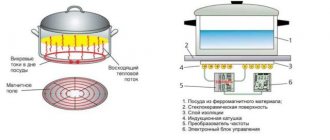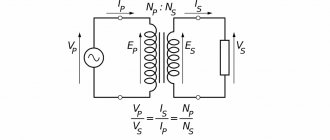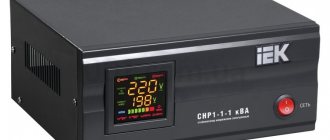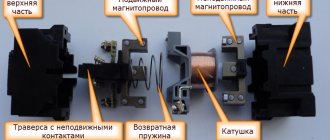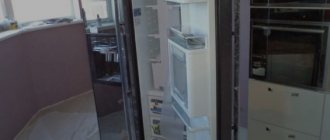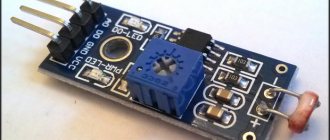The stove oven has a separate regulator with three positions. With minimal knowledge in the field of electrical installation work and the necessary tools, any device owner is able to cope with this task.
Electric stove connection diagram On the other hand, you may never turn on all the burners and the oven, and even at full power, and more powerful machines are significantly more expensive.
In addition, its overall dimensions, unlike powerful sockets, are small and the whole thing can be conveniently mounted behind kitchen cabinets. How to connect a hob at home
This group must eat according to paragraph.
Such jumpers made of copper or brass should be included with the hob. Connecting the hob is described here. Diagram and connection methods Electric household stoves are powerful equipment, the current they consume is of the order of A. In this case, a short circuit occurs between P and P. If there is not enough space in the power panel, this is an excellent solution to the problem.
Repair of the Dream stove, return to life, replacement of heating element, light bulbs, body repair
What are the benefits of electric stoves?
The main element in the kitchen has always been the stove, because without it the concept of “kitchen” loses its meaning. In gasified houses, gas stoves are mainly used, but recently more and more people prefer electric ones.
Electric stoves are easy to use, do their job well, and are safe, but only if connected correctly.
When purchasing a new electric stove, many stores provide the services of an electrician who will connect it.
Even if such a service is not provided, sellers strongly recommend using the services of an electrician to connect the device.
And all this because a modern electric stove is a very powerful consumer of electricity, which means that special requirements are placed on the safety of its connection.
But it is not necessary to call a specialist; even with basic knowledge in the field of electrical engineering, it is quite possible to connect this device yourself, there are no particular difficulties in this, but some conditions must be met.
The problem of choosing hobs
Choosing a product on the market is difficult due to the lack of suitable types. After all, the type of installation of the hob depends on the parameters of the selected model.
Hob: view after installation Source tehznatok.com
Main product classification:
- Products are gas, electric and induction. As for the electric panel, this is the best option for a house where gas is not installed. If the buyer's first priority is comfort, experts recommend purchasing a gas appliance. The induction hob is characterized by a modern set of advantages.
- Dependent panel. A dependent model is a model produced together with the oven. In this case, the oven is located inside the kitchen unit or is integral with the hob. The combination of oven and hob does not always happen, even if they are manufactured by the same company.
- Independent model. It is not connected to the oven. The main advantage of such units is the arbitrary location of the device in the kitchen. The dependent model is made so that it can be placed exclusively above the oven.
Differences by type of control:
- Mechanical mode of operation requires a rotating mechanism. Most consumers prefer this type.
- Touch models work with a light touch of your hand. This is a truly innovative method. Cleaning the panel is easy because the surface is smooth.
The main rule when choosing is security parameters. Source m.sm-shop24.ru
Features and conditions of the connection process
The first and one of the most important conditions is the ability of the wiring to withstand significant loads.
The house or apartment must have copper wiring with a cross-section of at least 4 mm. sq. If the power of the stove is significant, then a wire of 6 mm is required. sq. section.
The best option would be to lay a separate line for connection; this will allow you not to load the general wiring of the house, especially if it is an old building and the wiring is not designed for significant loads.
The second condition is the ability of the automatic switchboard to work with significant loads.
Therefore, the wiring that will power the stove should be connected to the circuit breaker with the highest current value, or an additional powerful circuit breaker should be installed under it in the distribution panel.
In this case, the current value of the machine should be one rating higher than this parameter of the plate in order to avoid critical loads. That is, when connecting a device with a current consumption of 20 A, a 25 A machine is used.
The third condition is the availability of additional means of protection. They can be differential circuit breakers or a residual current device.
The last condition is the correct connection. The stove can be connected to an outlet, which provides some convenience, allowing you to turn it off at any time.
But the socket and plug must be powerful and capable of operating under loads.
Selecting the type of electrical installation
The first thing you need to start with is to decide on the method of installing the line. Today, open and hidden wiring is used. Open electrical wiring involves fastening all the constituent elements on top of finished walls (the routes are laid in special cable channels).
Open line routing
The advantage is as follows:
- the damaged area can be repaired without any problems (no need to cut wallpaper, destroy plastered walls, etc.);
- simpler installation and preparatory work (no need to tap the walls along the electrical wiring in the house);
- convenient to add new branch points.
This installation method has one disadvantage -
very often it does not fit into the overall interior of the rooms since the cable channels do not have a very attractive appearance.
Hidden electrical wiring in the house is becoming more popular. In this case, wires and cables are laid in the walls; for this purpose, grooves are drilled - grooves in the walls, ceiling and floor or behind the suspended ceiling and wall cladding.
Advantage:
- does not spoil the interior of the rooms with its appearance;
- is fireproof;
- cheaper than outside.
- the likelihood of damage is much less;
- high durability of all elements.
Among the disadvantages are:
- complexity of repair and operation (to replace the electrical wiring in the house or connect a new point, you need to open the wall decoration;
- when a breakdown occurs, it is very difficult to find the exact location of the breakdown unless you use special devices, for example, a homemade metal detector;
- prohibited in a wooden house, according to PUE 7.1.38.;
- Electrical installation work requires more experience and a set of tools.
We recommend that you still opt for the latter method, since it is more durable and the entire line is not striking! When choosing high-quality components and correctly installing electrical wiring in the house, the likelihood of a breakdown is extremely low.
Security measures
When connecting, it is important to take security measures seriously. The wiring, socket with plug or terminal block must be designed to withstand significant loads.
The most important thing is to choose the right cable cross-section.
All connections must be well tightened; loose loose bolts or screws when connecting wiring are not allowed.
It is also important not to confuse the wiring when connecting to the stove, socket, RCD plug and machine.
Let's summarize.
In order for the electric stove to operate with maximum safety, it is necessary to ensure the supply of electricity to it with the appropriate parameters - the wiring, socket and circuit breaker must withstand a load greater than that created by the electric stove, but the RCD in terms of current strength must be as close as possible to this parameter of the electrical appliance. And it’s better if a separate line and automatic machine are used to power the electric stove.
But compliance with the conditions is not enough; you still need to connect the wiring correctly. After all, stoves can operate from a single-phase or three-phase network; there are also two-phase stoves, and it is important to connect everything correctly.
Marking work
Marking work involves marking the cable route on the walls with chalk or charcoal, as well as the installation locations of its elements. To quickly and smoothly make an electrical wiring route, it is recommended to use a rope pre-painted with chalk (or charcoal). Such a rope is correctly called a marking or painting cord; you can see how to use it in the photo below:
All you need to do to create one of the sections is to secure one end of the rope in its original position and carefully pull it to the end point (so that the painted rope does not touch the wall). After this, the rope must be pulled tight and released sharply so that the mark remains on the wall. You can learn more about how to mark walls for wiring in our separate article.
After completing the marking, it is recommended to photograph the walls in a private house. This will allow you to quickly find electrical wiring when replacing or repairing it.
Connection to a single-phase network
In the electric stove, under the protective cover, there are contacts to which the wire is connected.
For a single-phase network, this cable must be three-core.
One core is phase, the second is zero, the third is grounding. In the cable, each core has its own color. It is important to remember that the neutral wire is always blue or light blue, and the ground wire is yellow-green.
In the plate, there are usually more contacts for connection, but each of them has its own designation.
All terminals marked with the letter “L” are phase, no matter how many there are, zero is marked with the letter “N”, there may also be several of them, grounding is indicated with the letters “PE”, usually this is one terminal.
Knowing this, you can easily connect the cable. If, for example, there are several “L” terminals, and there is only one phase in a single-phase network, then you need to use the jumpers that come with the stove.
First, we connect the ground wire to the “PE” terminal, then the zero wire to the “N” terminal.
If there are several such pins, we use a jumper, connecting them together, and then connect the blue wire to one of the pins.
The last phase is connected. We connect all the pins marked with the letter “L” with a jumper (if there are three of them, then they are designated as “L1” “L2” “L3”).
After connection, connect the phase wire. In a three-core cable, it may be brown, gray or black.
Preparatory stage
Now let's move on to the preparation and subsequent connection of the equipment in question. Before you start directly connecting and working with electrical wiring, you should choose the right place for the stove. There are the following rules on how to do this:
- the place where you plan to install the stove must be level, so that when adjusting with the legs, its stable and stable horizontal position is ensured;
- the length of the wire should be made with a reserve so that, if necessary, you can easily move the household appliance away from the wall without removing the plug from the socket;
- In no case should the device be placed close to the refrigerator, since the hot burner can have a temperature of up to hundreds of degrees;
- if the stove is built into a kitchen wall or cabinet, then the panels made of plastic should be protected from overheating during operation of the electrical appliance;
- It is better not to place other electrical appliances near an induction cooker - the electromagnetic field can negatively affect their operation.
To carry out the work you will need to have the following materials on hand:
- 3-core cable, the cross-section of which will be 4-6 millimeters. This will depend on the length;
- a separate machine for the panel in order to correctly connect the equipment. There should be either a 32-amp version or a 40-amp equivalent, depending on the wire cross-section;
- RCD, which should protect equipment from overloads.
The last two points are considered mandatory components of the process of connecting the device in question, regardless of the manufacturer. They are the ones who will save equipment from burning out due to voltage surges that can be observed in the city’s electrical network. It's kind of a switch. If the builders carried out only a 3-core wire, then to install a special socket or terminal box you will need to make channels in the wall to deepen the cable. This work will require some skills and will take a lot of time, but in the end the interior of the room will not be damaged, and the cable will be located inside the wall. True, you first need to decide what would be best to do:
- connect everything directly;
- install a socket;
- install the transfer case.
If you don't know what to choose, you should consult a professional. Connecting directly is considered the safest, because the absence of unnecessary cables significantly reduces the risk of device overheating. In new high-rise buildings the situation is simplest - the builders simply leave the cable insulated, and the residents decide for themselves what to do. The solution through the terminal box, if there is no plug on the cable, is also possible in new houses.
The box is usually placed on the kitchen wall no lower than 0.6 meters from the floor, and the stove is installed no further than a couple of meters from it. As a rule, it is made of metal or very durable plastic, and is covered with a lid on top.
It should be noted that there is already a connection to the home electrical network inside. You just need to find out how to connect the electric stove. The circuit is very simple: the black cable represents the phase, the blue cable represents the neutral, and the yellow cable represents the ground. All 3 wires are connected to the box, oriented by color. Then all that remains is to check the tightness of the connection screws and close the cover.
Another way to connect is through an outlet. There are currently three categories of sockets on the market:
Belarusian;
In the Russian version, the ground wire is located on top, its input is rotated 90 degrees to 2 other holes. When working with a Belarusian socket, the contacts are rotated 120 degrees. A feature of the European socket is the presence of two contacts with a round cross-section, and the grounding will have a flat cross-section and be located at the bottom. But this option is considered obsolete. If there is no point in creating wiring, then the mounted socket simply needs to be checked with a special device to find out the phase.
Connection to a two-phase network
A rare, but still common connection method.
The connection diagram for an electric stove operating from a two-phase network is somewhat different, since this requires a cable with 4 cores, two of which will be phases, the other two will be zero and ground.
The connection is made as follows: connect the ground wire, then use a jumper for the zero terminals and connect the neutral wire.
If the plate has three phase terminals, then connect two of them with a jumper and connect one phase wire to one of the terminals, and the second phase wire to the remaining third terminal.
General information
When the stove burners overheat, the owner has to think about how to connect a new element. Naturally, you cannot do without the correct diagram, and the diagram must be written in the technical data sheet of the furnace. But admit that after 20 years of use, few people remember where the documents from the stove are.
Please note that ideally, new burners should be connected to the electric stove strictly according to the diagram that is in the technical data sheet.
Connection to a three-phase network
To connect a stove operating from a three-phase network, you need a cable with 5 cores, 3 of which will be phases, the other two - ground and zero.
Again, first connect the ground and zero, having previously shorted the zero terminals with a jumper, if there are several of them.
We connect one phase wire to the three phase terminals.
The colors of the phase wires may be different, but it is important to remember that the neutral wire is always blue or light blue, and the ground wire is yellow-green.
Keeping this in mind, you can easily connect the cable to the stove, and it does not matter what network it is on.
Guide to grounding an electric stove
When working in old-style networks, even qualified specialists often consciously make a grave mistake by grounding various electrical appliances to the working zero buses. Such a connection is fraught with an extremely unfavorable consequence: if the zero wire breaks, the phase will pass through the load directly to the electrical appliance and the user will be shocked.
Electricians often make another serious mistake, confusing the phase and neutral wires. When performing such “grounding”, the result will be similar to the previous case - the owner of the stove can receive an electric shock at any time. But you can’t refuse zeroing either. There are several options to solve the problem. Review the available methods and choose the one that suits your situation.
The first option is to find out whether the apartment’s switchboard is grounded
Let's find out whether the apartment's switchboard is grounded.
To do this, we go to the housing office or another service organization. If a company representative says that the shield housing is reliably grounded, all we have to do is connect the yellow-green wire to this housing through a bolt.
If a representative of the service organization gives a negative answer or is confused in his testimony, grounding cannot be performed using the method described above - it will either be ineffective or will lead to an electric shock to the user of the electric stove.
The second option is for residents of apartments on the ground floor and house owners
Ground loop diagram
Owners of such real estate can try to create a separate ground loop. It is done like this:
- behind the outer wall of the building, three steel rods with a diameter of 16 mm and a length of 250 cm are dug into the ground;
- the buried rods are connected by a strip of steel 4 cm wide and 0.5 cm thick;
- a grounding (yellow-green) wire, previously terminated with a lug, is removed from the electrical panel;
- A wire rod is pulled from the grounding loop upward to the grounding wire. The recommended diameter of such wire is 0.8 cm. At the end of the wire rod, a steel plate with a hole for the bolt is pre-welded. The grounding cable is fastened with a bolt to the wire rod plate at a height of at least 250 cm from the ground level;
- The grounding cable is connected to a separate neutral bus in the switchboard. The grounding wire from the installed stove is connected to the same bus.
How to make grounding correctly
How to make grounding
Important! Before putting the grounding device into operation, you need to invite a specialist to measure the installation resistance. You can perform such verification yourself only if you have a special device. The resistance value should not be more than 8 ohms.
Table. The smallest dimensions of grounding conductors and grounding conductors laid in the ground
| Material | Section profile | Diameter, mm | Cross-sectional area, mm | Wall thickness, mm |
| Black steel | Round for vertical grounding conductors | 16 | — | — |
| Black steel | Round for horizontal grounding conductors | 10 | — | — |
| Black steel | Rectangular | — | 100 | 4 |
| Black steel | Angular | — | 100 | 4 |
| Black steel | Pipe | 32 | — | 3,5 |
| Galvanized steel | Round for vertical grounding conductors | 12 | — | — |
| Galvanized steel | Round for horizontal grounding conductors | 10 | — | — |
| Galvanized steel | Rectangular | — | 75 | 3 |
| Galvanized steel | Pipe | 25 | — | 2 |
| Copper | Round | 12 | — | — |
| Copper | Rectangular | — | 50 | 2 |
| Copper | Pipe | 20 | — | 2 |
| Copper | Multi-wire rope | 1,8 | 50 | — |
Third option - if grounding fails
The shield is not grounded, but it is not possible to make an individual grounding circuit? Then we simply plug the yellow-green wire and leave it in the shield until better times.
In such a situation, we pay special attention to the stove.
Firstly, we install it so that there is no possibility of simultaneous user contact with the stove and various live elements such as taps, sinks, pipes, etc. metal products.
Secondly, we lay, if not a special dielectric coating, then at least a thick dry mat near the electric stove.
Thirdly, we replace the conventional circuit breaker in the panel with a differential model with a 30 mA response rating.
Fourthly, we exercise special caution and vigilance when operating an ungrounded electric stove.
Important! It is impossible to ground an electric stove to water supply, sewerage and heating pipes. Although the listed elements according to the rules must be reliably grounded, no one usually controls the resistance of such grounding. The result can be a breakdown of the electrical appliance, electric shock to the user and damage to property, not only your own, but also that of your neighbors. It is also forbidden to ground electrical appliances to other utilities such as elevator shafts, ventilation ducts, etc.
Checking the operation of the electric stove
Good luck!
Complete connection diagram via socket
Now let’s look at the complete connection diagram for an electric stove; for example, let’s take a model operating from a 220 V network (single-phase), and we’ll lay a separate line for it.
First, let's connect it using a socket. Before starting work, the switchboard must be de-energized.
So, first of all, we connect the wire to the machine on the distribution panel.
We connect the phase and neutral wires to it, the ground should be connected to the grounding of the house or apartment.
Regarding grounding - a little lower. Immediately behind the machine we connect the RCD in series and secure it.
Then the wire is pulled to the location where the socket is installed. This can be done in an open way (using a corrugated tube or plastic box).
Read more here: How to properly install electrical wiring.
The socket and plug for a single-phase network must be three-pin.
When connecting wires to an outlet, be careful not to tangle the wires. The earth must be connected to the ground contact, the zero to the zero contact, and the phase to the phase contact.
And you definitely need to make sure that the cable from the stove is connected to the plug in the appropriate way. It is very important not to confuse the wiring.
We fix the socket on the wall, it is important that it is located at a distance from metal structures (pipes or radiators), that it is not affected by heat sources, and that water does not enter.
Then we connect the power cable along with the plug to the stove. After this, we carefully check all connections, they must be well tightened, all elements of the circuit must be securely fastened.
Next, a trial run is carried out. First, the machine turns on, then the RCD, and the stove itself.
After turning on the stove at full power, everything is turned off and all elements are checked for heating.
Basic equipment
The design of any model of domestic or imported electric stove is almost the same, but they all have their own original nuances. For example, modern Hansa electric stoves from Germany have a special configuration, but we will look at the standard option that every electric stove model has. Traditionally, these products are a combined electrical appliance designed for cooking; it combines:
- hob with burners;
- oven;
- bottom drawer for storing dishes and baking sheets.
The operating principle is standard for most electrical appliances: current passing through the heating element heats it to a given temperature. controls are located on the front front panel
– they can be mechanical or electronic, depending on the class of the product.
As a rule, on the same panel there are two indicators
: one notifying that the device is connected to the network, and the second notifying that the oven is turned on. Some stoves only have the first indicator. Using the controls, users can set the cooking mode on any burner or oven.
The figure below shows a diagram of a standard electric stove.
Let's decipher the notation:
- power regulator;
- terminal box;
- burner;
- support bar;
- oven temperature sensor;
- a loop;
- stopper;
- oven heating element holder;
- oven heating element;
- internal cladding panel;
- door latch lock;
- latch socket;
- insulating gasket;
- heating element for grilling;
- burner rim;
- power cord;
- ground terminal;
- adjustment knobs.
Connection without socket
Connecting a stove without using an outlet, but using a terminal block, is practically no different.
The wire is connected to the machine, then it cuts into the RCD circuit, and the wire is pulled to the installation site of the stove.
A recess is made in the wall into which a protective box is installed. The terminal block is placed in this box.
The wire coming from the distribution panel, as well as the cable from the stove, is supplied and connected to it.
They are fixed in the terminal block; it is important not to confuse which wire is which.
After this, the protective box is closed with a lid. Well, then – a performance check.
It is noteworthy that the connection diagram for electric stoves is almost the same.
Many people are familiar with Hansa and Mechta electric stoves. Buyers often ask how to connect them correctly.
Since there are many models of stoves, it is difficult to guess which one you purchased. But we described all possible connection methods above.
See the power consumption and what wiring your model is designed for (single-phase, two-phase or three-phase) and apply our recommendations.
The Hansa stove from a foreign manufacturer is connected to the network, just like the domestic Mechta stove. It is only important to choose the right wiring and all other elements included in the power line.
Popular among readers: Methods for replacing electrics in an apartment.
Additional Tips
Before you start replacing an element on the stove, you need to make sure whether it is really out of order. It is almost impossible to do this with a regular dial, since the heating element has its own resistance. It is the resistance that needs to be checked. The manufacturer indicates what value is normal for a working unit. It is necessary to attach two multimeter probes to the heater contacts and switch to resistance measurement mode. At the end of the process, you need to check the reference value.
Note! The resistance must be measured on a dismantled heater, otherwise the value of the entire system will be displayed.
During installation, be careful at the connection points. All exposed wires must be insulated using electrical tape or heat shrink tubing. No exposed wire should touch the stove body. When performing replacement work, it is necessary to turn off the power to the stove. All tools that will be used must have dielectric handles that will not allow the discharge that may occur in the capacitors, if they are present in the circuit.
Installing the Power Cord
Open the back panel of the electric stove (Fig. 9), which is attached to its rear surface with screws.
Electric stove connection Fig. 9
Having removed the back panel, we will see holes intended for cable routing (Fig. 10). To avoid unwanted movement of the wires, the cable in the hole must be tensioned.
Electric stove connection Fig. 10
Next, remove the copper fuses. If the stove is imported, then there are 4 connection points above the hole: two for power, one neutral, one grounding (Fig. 11). Neutral - located in the center, on the sides there are two network and ground contacts. If there is a plate that connects the neutral contact and ground, then for a single-phase connection it should be removed. (For three-phase, do not remove).
Electric stove connection Fig. eleven
It is very important to follow the location of the wires, as indicated in the instructions for the stove. Before closing the panel to attach the power wire, all wires are tightened securely. Terminals and connectors have a fragile structure, therefore, to avoid damage to them, it is important to prevent overtightening. Before connecting the stove, attach the back panel.
Electrical parameters and ratings of circuit breakers
- choose the length of the cable so that you can freely move the stove away from the wall or furniture without disconnecting it from the power supply;
- install the device at a considerable distance from the refrigerator or other cooling equipment so as not to damage it (the frying pan on the stove heats up to 100°C, which can lead to incorrect operation of the device installed next door);
- Do not place other electrical appliances near the stove, as the electromagnetic field affects the quality of their operation.
Cable installation
When choosing the cross-section of an underwater cable, many make the mistake of being guided only by data on the maximum current consumed by the electric stove. Ignoring the fact that the cable must withstand a current greater than the rating of the circuit breaker in the panel.
As a cable for connecting household electric stoves, it is most rational to use a flame retardant cable with single-wire copper conductors, for example, VVGng or NYM.
The cable for the electric stove should be installed together with the rest of the wiring in a hidden way. It should come out of the wall near the installation site of the electric stove.
ECH. Interchangeability with other burners.
- Directly to the panel , which is often used in new buildings, where the developer simply leads out a wire of the required cross-section and puts a plug on it;
- Through a terminal box - outwardly similar to a regular socket, only the wires are screwed to the terminal bus with a screw and covered with a lid on top;
- Through a special power socket for 20-32A.
It is most effective to connect directly to the panel, since this requires less wire, and the plug will not pull out of the socket if something happens.
Because of this, many people prefer to install a terminal box. Most often, in old apartments, users replace the outdated Soviet socket with such a box. It holds the wire firmly, and all contacts are reliably protected from animals and children.
The main advantage of the socket is its flexibility in relocation . For example, during repairs, in order to move the stove, you just need to remove the plug. This is easier and faster than unscrewing the screw in the terminal box. Because of this, such sockets are often installed in restaurants and cafes, where rearrangements or general cleaning are done from time to time.
There is little point in installing them at home, since you are unlikely to rearrange them often. Moreover, it is usually hidden behind kitchen furniture so that it is not visible. Therefore, it is better not to bother and connect directly, especially since the socket is the weakest “link” in the electrical circuit and losses in current characteristics may occur in it.
Choose the method that you like, but the contact connection diagram already depends on the phase pattern of the network.
Cable installation
To install the cable, you need to connect the socket or terminal block to the electrical panel using a cable. Before starting this work, it is necessary to groove the wall. If you want to hide the installation in the wall, it will take much more time, but this will help maintain the aesthetics of the interior.
To install the cable, you need to connect the socket or terminal block to the electrical panel using a cable.
But there is a simpler alternative, which is especially common in houses with wooden walls. For this option you will need to use an external box. To carry out gating and laying in a box, you need to choose the shortest route.
But there is a simpler alternative, which is especially common in houses with wooden walls.
